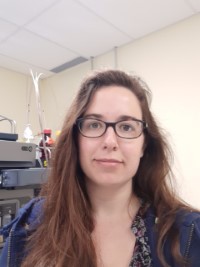 Analytical Concerns Associated with Emerging Polyfluoroalkyl Substances
Analytical Concerns Associated with Emerging Polyfluoroalkyl SubstancesVendor Lunch Speaker
Oral Presentation
Prepared by J. Robinson1, F. Dorman2, L. Irwin1, J. Stubleski1, N. Riddell1, B. Chittim1
1 - Wellington Laboratories for Waters Corp., 345 Southgate Dr, Guelph, ON N1G 3M5, Guelph, Ontario, ON NIG 3MS, Canada
2 - Waters Corporation, 34 Maple St, Milford, Massachusetts, United States
Contact Information: [email protected]; (519) 822-2436
ABSTRACT
Nafion by-products 1 and 2 are polyfluoroalkyl ether acids of emerging concern that are potential by-products from the manufacturing of Nafion polymeric materials. Nafion by-product 2 (NFBP2) has been found in samples from the Cape Fear River (CFR) in North Carolina as well as in seabirds from that area. However, Nafion by-product 1 (NFBP1) contamination has not been extensively addressed in the scientific literature even though it could also be produced as a side product during industrial manufacturing. We have investigated the stability of Nafion by-product 1 during typical PFAS water extraction/cleanup procedures and found that it has limited stability in methanol. Over time, decomposition was found to occur in methanolic reference standards at room temperature. Furthermore, when extracted from spiked water samples according to EPA Method 533 protocols, NFBP1 was found to decompose significantly resulting in barely detectable levels. Suitable reference standard and sample handling procedures will be described that allow for the quantitation of not only NFBP1 and NFBP2, but also more routinely analyzed per- and polyfluoroalkyl substances (PFAS) using a Waters Acquity UPLC I-Class / Xevo TQ-XS system. This work demonstrates the importance of method validation when PFAS target lists are expanded to incorporate emerging environmental contaminants.

